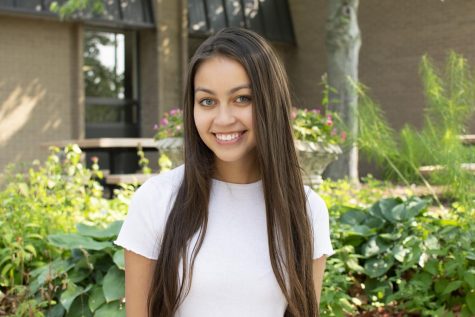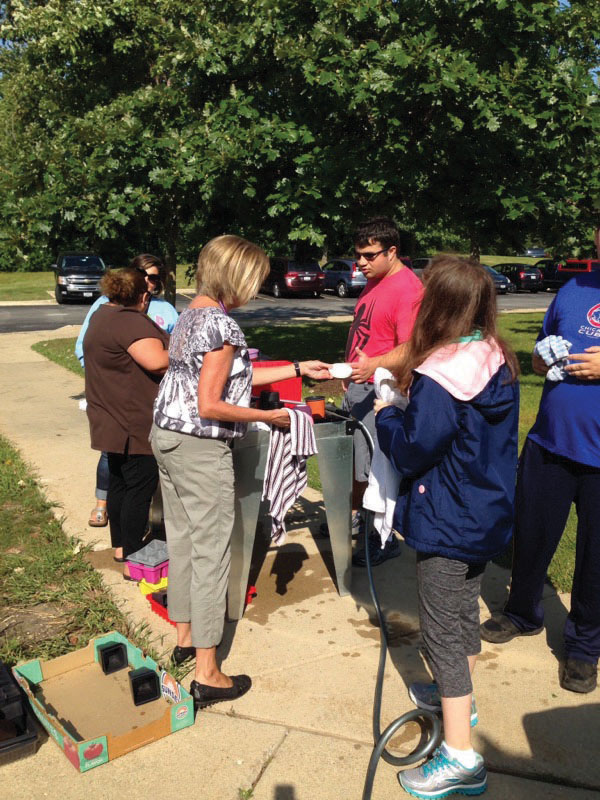Greenhouse branches out
Transition students grow skills through work
The greenhouse, which sits right outside door 10 on the west side of the school, is a symbol of growth for the transition program, filling needs for the students as they develop life skills.
“Our students get to work on jobs in there. We grow many different kinds of plants, so the kids learn how to care
of them — [which] fills sensory needs,” Jenna Catladi, special education teacher, said. “Some of our student needs that tactile learning experience to process the different stimuli in their environment.”
After winning grant money from the District 95 Foundation, the Transition Program, a program of students who work on life skills after graduation, were able to create the greenhouse. This space has allowed for hands-on experiences that help the students further their tactile development, Annamarie Bader, special education teacher, said.
“We have students that have autism that may have difficulties touching the soil, but, as time goes on, you can see some of them grow [and are] able to handle it more,” Bader said. “We work with one occupation therapist, [Kathi] Keirans. They work on a lot of occupational type stuff, so sweeping, planting, cutting, and things that are very hands on that will help with [the students] fine motor skills.”
Within the greenhouse, the students not only improve their skills, but they also take pride in having their own jobs, but they also learn how to work with one another, according to Kennedy Schaefges, transition student.
“It really makes me happy because sweeping is one of my things that I do in the greenhouse,” Schaefges said. “I like to sweep up everything. It’s been really helpful, and my friends like to help me out too.”
For students to continue learning these kinds of skills, the special education teachers plan to extend working on the greenhouse into the summer when it is usually closed down due to heat, Bader said.
“Our students do go to ESY [extended school year services], so they will work with a summer school teacher out there. In the spring and summer we will be working to get straw bales outside,” Bader said. “Straw bale farming is the new thing that a lot of people are starting to do. If you don’t want to dig in the soil, you can have straw bales outside where we can get all prepped and ready to go. We can grow vegetables and herbs in straw bales.”
With the vegetables, herbs, and other products the students grow, they have plant sales and sell to the staff at the school — which has attracted many people.
“One of the more popular things we have had this year was [when] we grew a bunch of herbs, we dried them, and we turned them into turkey spices for Thanksgiving. We sold a bunch. That was a really big money-making thing,” Bader said. “All of the money the students make from the greenhouse goes back into an account for them: their activities they get to do and for the greenhouse in general. It has just been a cycle, paying for itself. We haven’t made a ton of money, but hopefully, in the future, we will. It just takes a couple of years to see what works and what sells — just like any business.”

Along with being Editor-in-Chief of the Bear Facts magazine, Chloe is involved with Yearbook, Student Leadership, Student Council, SNAP, and Interact....

